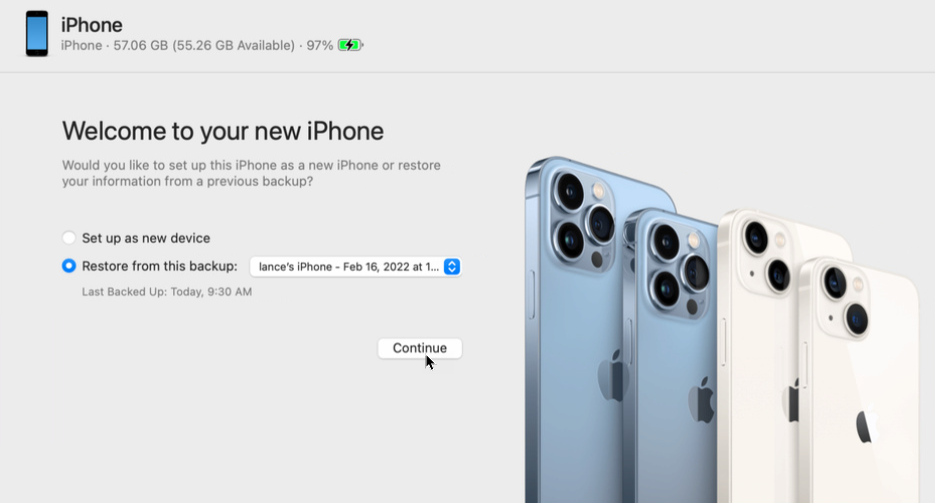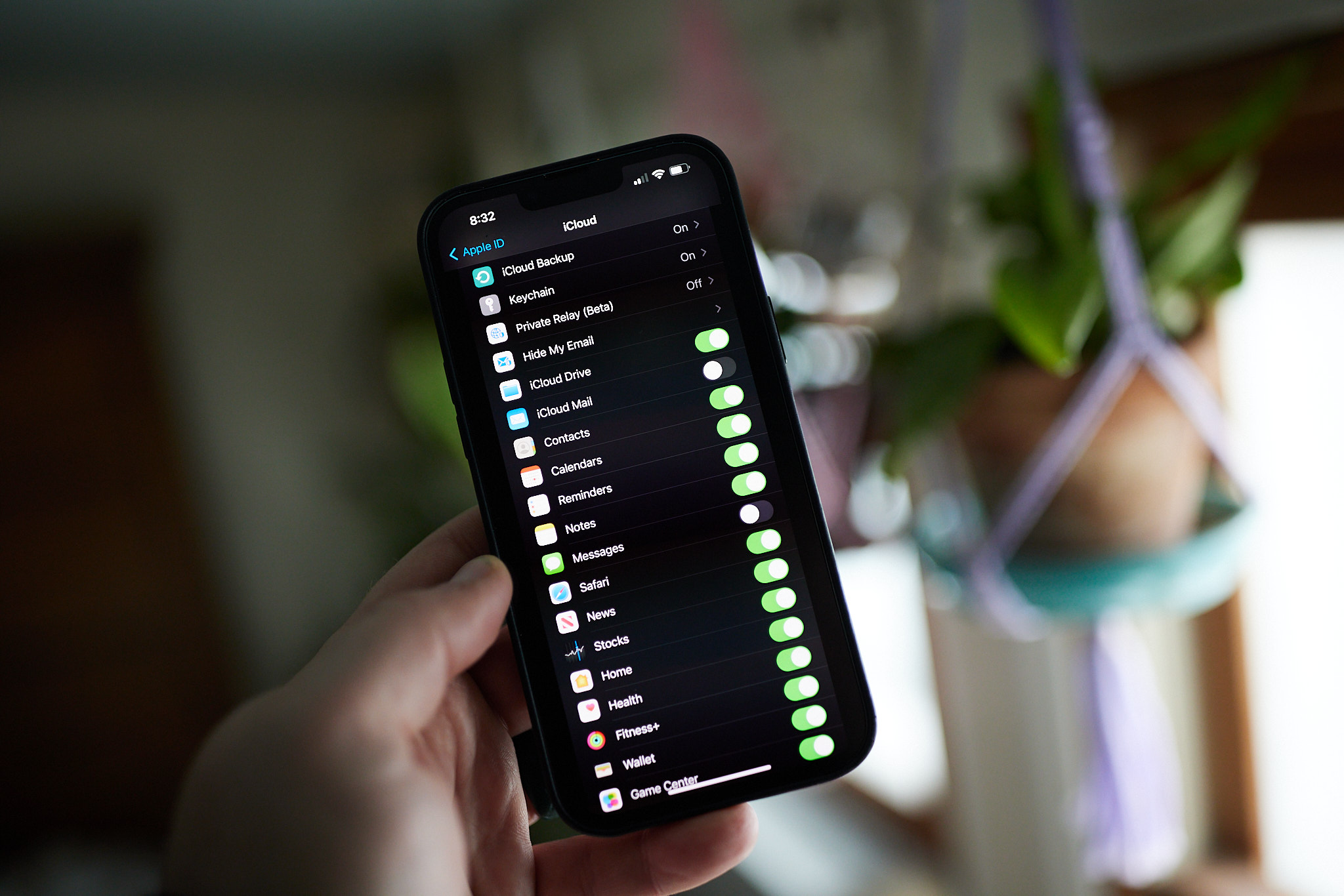

We may earn revenue from the products available on this page and participate in affiliate programs. Learn more ›
Your iPhone is home not just to all your favorite apps, but also to important and irreplaceable data and personalized settings. Should your phone ever stop working properly or even go missing, you want to be able to restore all your apps, data, and settings, either to the same phone or to a different one. And you want that process to be as quick and easy as possible. That’s why backing up your iPhone periodically is crucial.
The process of learning how to back up your iPhone is fairly straightforward, However, you can choose from a few different backup methods, such as backing up to iCloud or to your computer and backing up manually or automatically. Here’s how it all works:
Want to protect your phone as well as your data? Check out our list of the best iPhone 13 cases for 2022.
iCloud vs local backup
First, let’s go over the different ways to back up your data along with the pros and cons of each. Backed-up iPhone data can live on a hard drive or on the web. Both have their advantages and drawbacks, but a mixture of both will provide you with the most secure system.
Backing up to iCloud
Choosing iCloud stores your backup in Apple’s cloud-based service. With this method, you run the backup directly from your phone, so you can do this at home or on the go. As your backup is saved in the cloud, you’re also able to restore it from any computer. On the downside, Apple limits the amount of free iCloud storage to only 5GB. If your phone needs more space for backups (and it likely will), you’ll have to shell out money for a paid iCloud subscription—50GB of storage for $0.99 cents a month, 200GB for $2.99 a month, or 2TB for $9.99 a month.
Backing up your phone to iCloud includes the following data and files:
- App data
- Apple Watch backups
- Device settings
- Home screen and app organization
- iMessage texts, SMS messages, and MMS messages
- Photos and videos
- Purchase history from Apple services, such as your music, movies, TV shows, apps, and books.
- Ringtones
- Visual Voicemail password (requires the SIM card in use during the backup)
An iCloud backup excludes the following items:
- Data already being synced and stored in iCloud, including Contacts, Calendars, Notes, Photos, iMessages, SMS and MMS messages, Voice Memos, and Health data.
- Data stored in other cloud services, such as Gmail email.
- Apple Mail data.
- Apple Pay information and settings.
- Face ID or Touch ID settings.
- iCloud Music Library and App Store content.
Backing up locally
Choosing a local backup stores the backed-up data on your computer’s hard drive. As such, storage shouldn’t be an issue as long as you have enough disk space. You run the local backup from iTunes in Windows or from Finder on a Mac. But you risk losing the backup should your PC ever crash or become inaccessible. Backing up to your computer includes almost all your phone’s data and settings. It excludes the following items:
- Content from the iTunes and App Stores.
- PDFs downloaded directly via Apple Books.
- Content synced from Finder or iTunes, such as imported MP3s or CDs, videos, books, and photos.
- Data already stored in iCloud.
- Face ID or Touch ID settings.
- Apple Pay information and settings.
- Apple Mail data.
- Activity, Health, and Keychain data (if the backup is not password protected).
Of course, you can run separate backups using iCloud and your local computer. You may want to rely on an iCloud backup if you’re traveling or away from your computer. You might then supplement the iCloud backup with a local backup whenever you’re in front of your PC.
Manual vs automatic backup
Whether you use iTunes, Finder, or your iPhone directly, you can run a backup manually or set it to run automatically. The two aren’t exclusive, as you can create an automatic backup and still run a manual one when needed, for example, before you make any major changes on your phone. Once set, an automatic backup revs up when your iPhone is connected to a power source, is using Wi-Fi or cellular, and is locked.
Using a password
Securing your backups with a password not only protects the data but allows you to back up certain types of information that normally would be excluded. A password-protected, or encrypted backup, includes saved passwords, Wi-Fi settings, your website browsing history, health data, and call history. Backups to iCloud are automatically encrypted. To encrypt a local backup to your computer, you’ll have to create and apply a password. All local backups are then encrypted from that point on.
Back up in Windows with iTunes
If you use iTunes on a Windows computer, you can kick off the backup from the program. Fire up iTunes and connect your phone to your PC via USB. Click the icon for your phone at the upper left section of the screen. Make sure the Summary screen is selected under Settings and check out the section for Backups. To manually back up your phone to your computer, click the button for Back Up Now. After the process is complete, the status under Latest Backups shows the date and time of the backup.
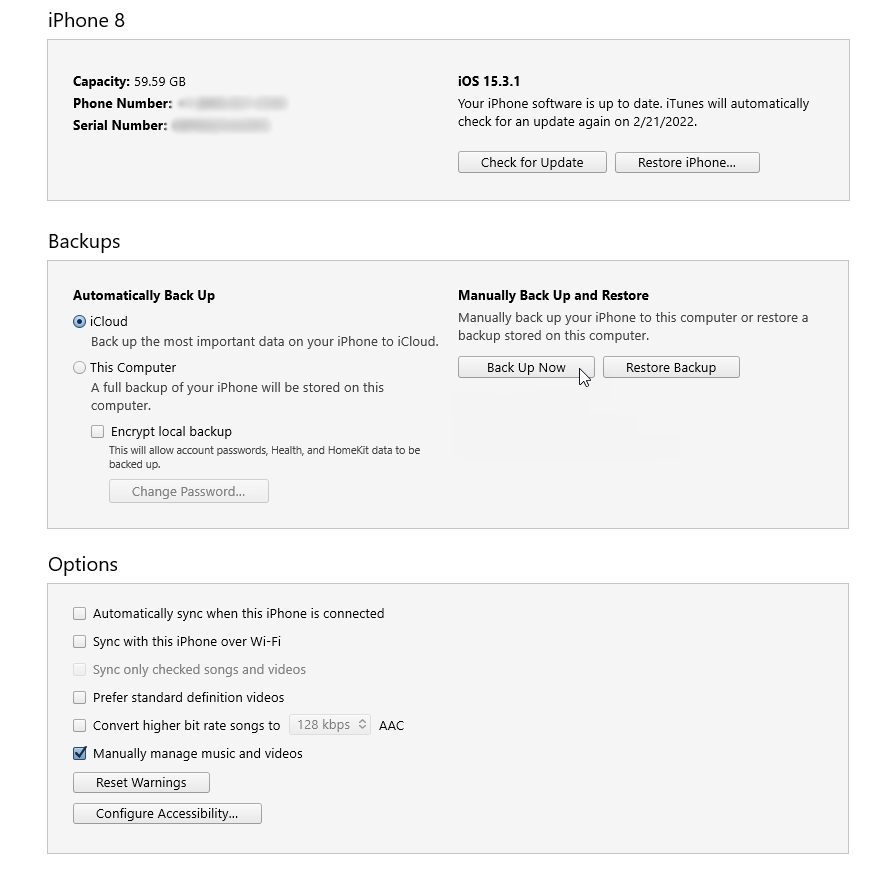
To set up an automatic and local backup from iTunes, select This Computer in the Automatically Back Up section. The next time your iPhone is connected and locked, and you open iTunes, the backup will occur automatically. The Latest Backups section shows the date and time of the last backup.
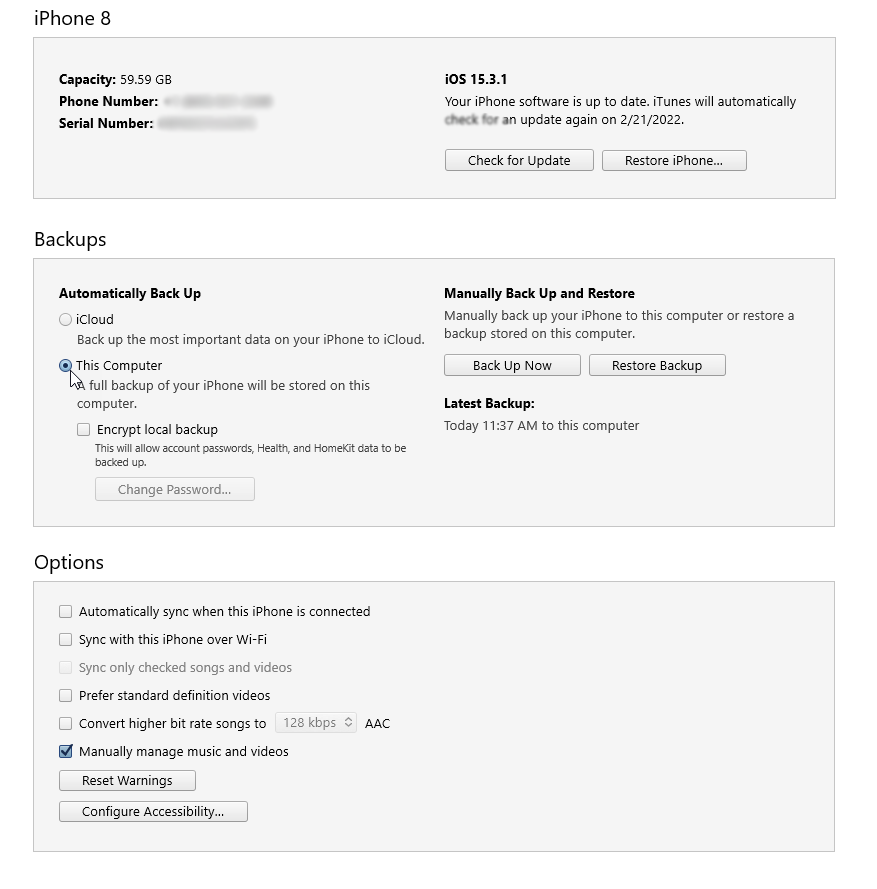
If you wish to encrypt a local backup to your computer, check the box for Encrypt local backup. Type and then retype a password to secure the backup. Click the button for Set Password. You can now manually back up your phone or allow the automatic process to occur. Either way, the backup will be encrypted.
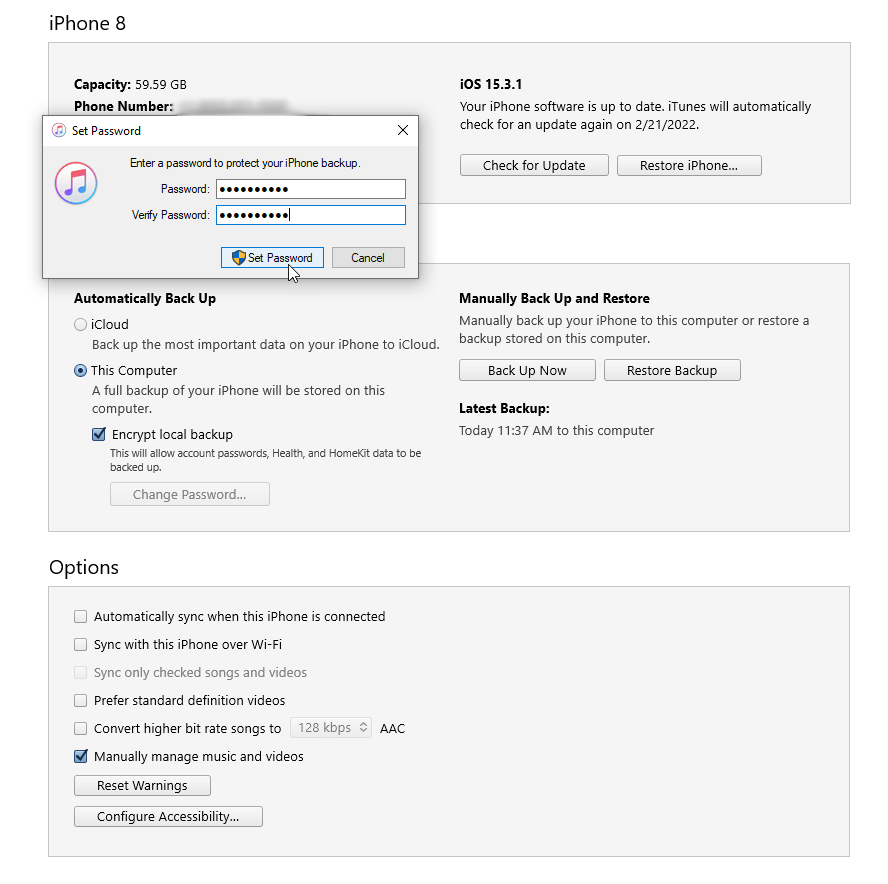
Beyond checking the status of your local backups in the Latest Backups section, you can review them under iTunes Preferences. Click the Edit menu, select Preferences, and then click the heading for Devices. This screen displays each backup. A lock icon indicates that the backup was encrypted. Hover your mouse over a specific backup to see all the details on it.
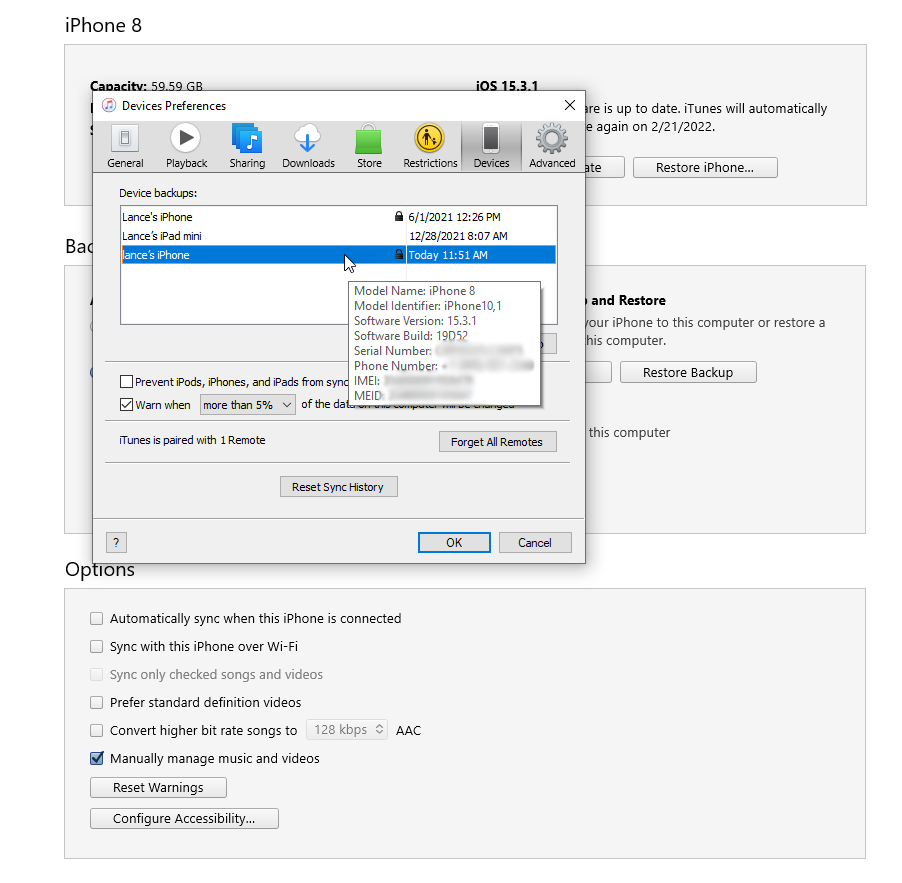
Back up on your Mac with Finder
With the introduction of macOS Catalina in 2019, Apple replaced iTunes with dedicated apps for specific content, such as Apple Music, Apple Books, and Apple Podcasts. Those of you still running an older version of macOS can use iTunes to back up your iPhone just as on a Windows PC. But if your Mac has macOS Catalina or higher, you instead use Finder for your phone backups. The process in Finder is almost the same as in iTunes.
Connect your iPhone to your Mac. Click the Go menu and select Home. On the left side of the Finder window, your phone should be listed under Locations where you click on it. Look for the Backups section in the General screen.
To run a manual backup to your computer, click the Back Up Now button. To set up an automatic backup, choose the option for this Mac. Click Apply and the back-up will run anytime your iPhone is connected and locked. To protect a local backup, check the box for Encrypt Local Backup. Enter and re-enter a password and then click the Set Password button. Perform a manual back-up or allow an automatic one to run.
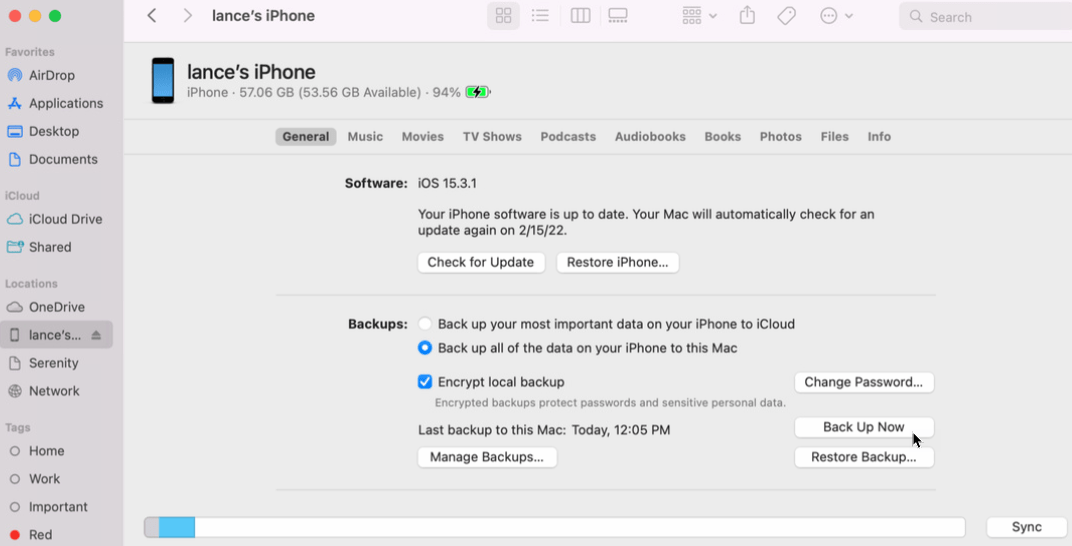
To view a history of the backups on your Mac, click the Manage Backups button.
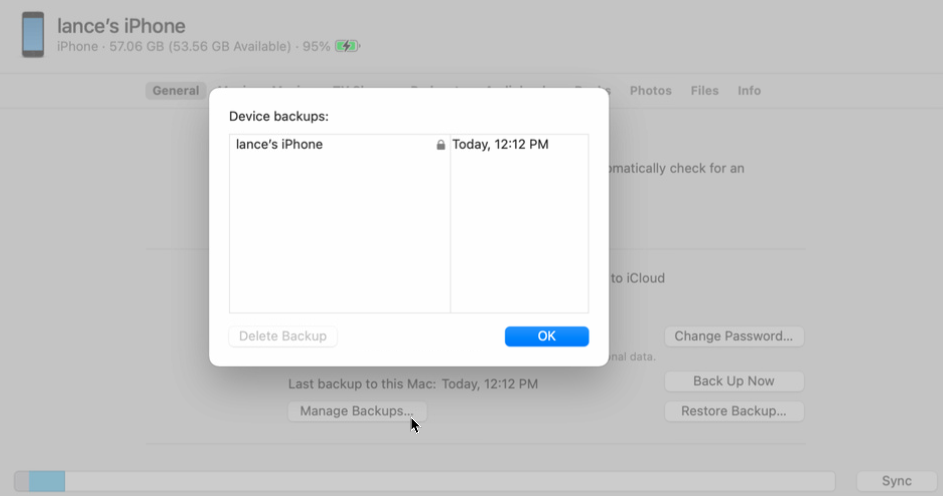
Back up to iCloud from your iPhone
You don’t even need your computer or iTunes or Finder to back up your iPhone to iCloud as you can do it directly from the phone itself. And you’d use this method to back up your phone manually or automatically. On your iPhone, go to Settings and tap your name at the top. From your Apple ID screen, tap the setting for iCloud.
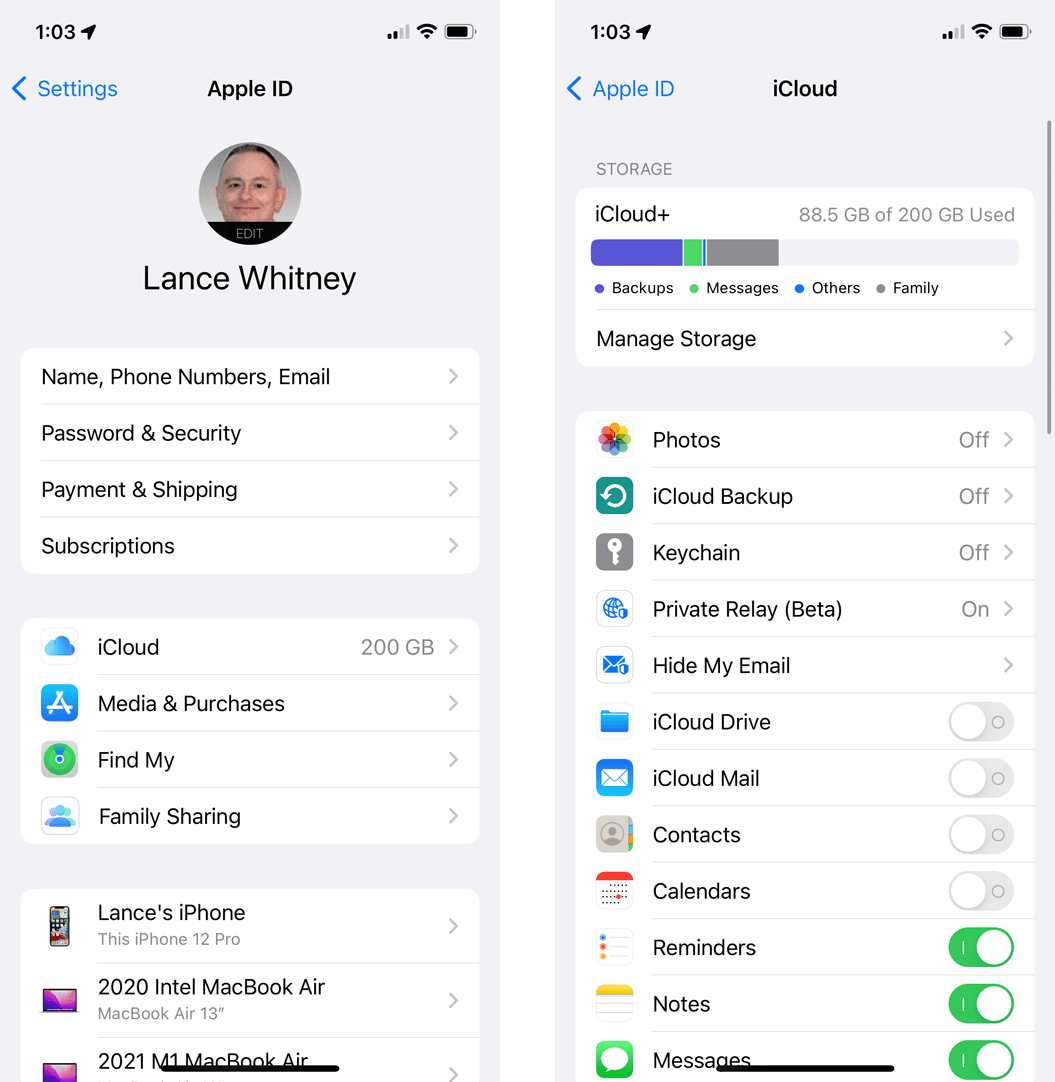
First, this screen shows you how much space is used up in iCloud so you can determine if you need to upgrade to a paid subscription. If you’re running low on space, tap the option for Manage Storage. At the next screen, tap the option for Change Storage Plan. Now choose the plan you want to purchase.
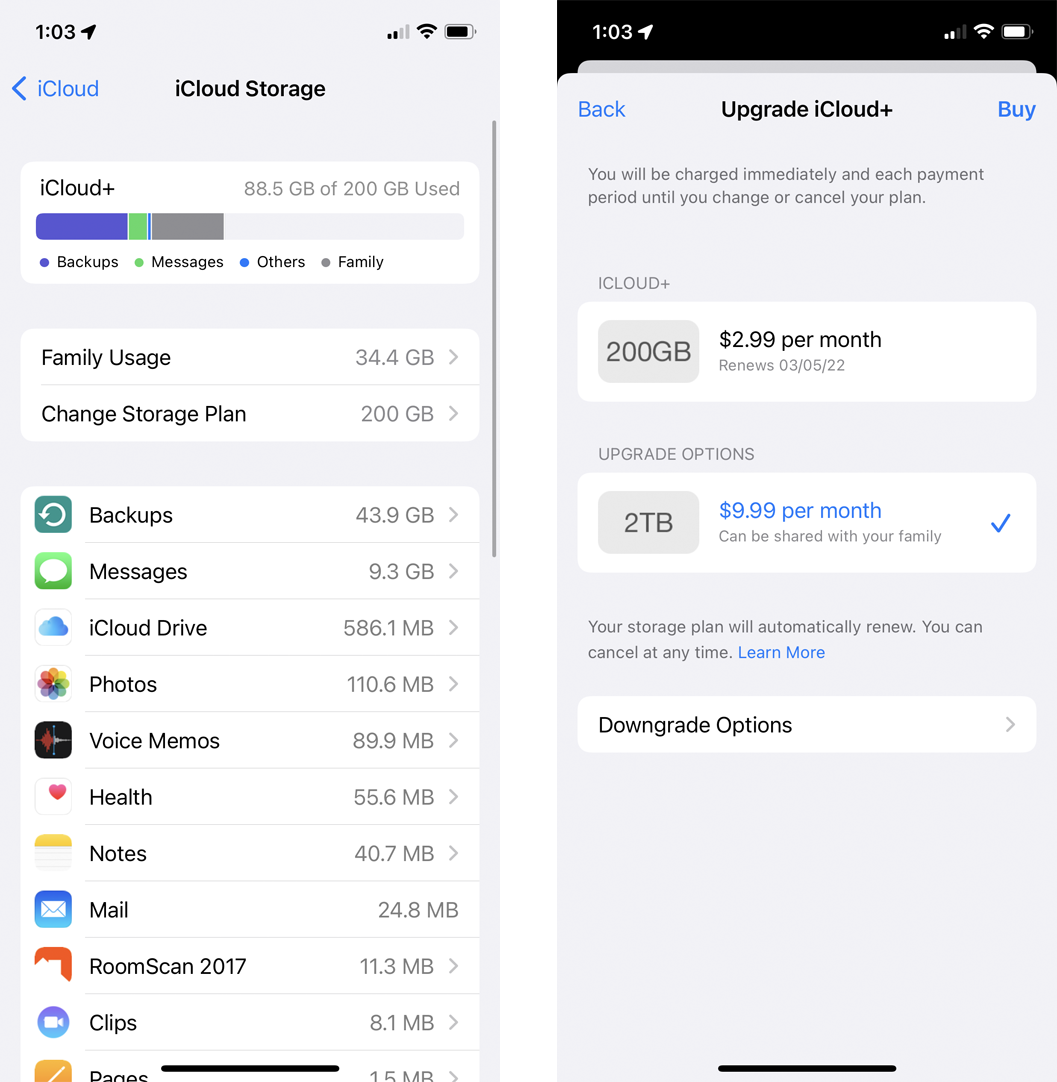
Return to the previous iCloud screen and tap the setting for iCloud Backup. Turn on the switch for iCloud Backup. Your phone will now be backed up automatically when the phone is connected to power and locked. If you want the backup to run even over a cellular connection, turn on the switch for Back Up Over Cellular. To perform a manual backup at any time, tap the option for Back Up Now.
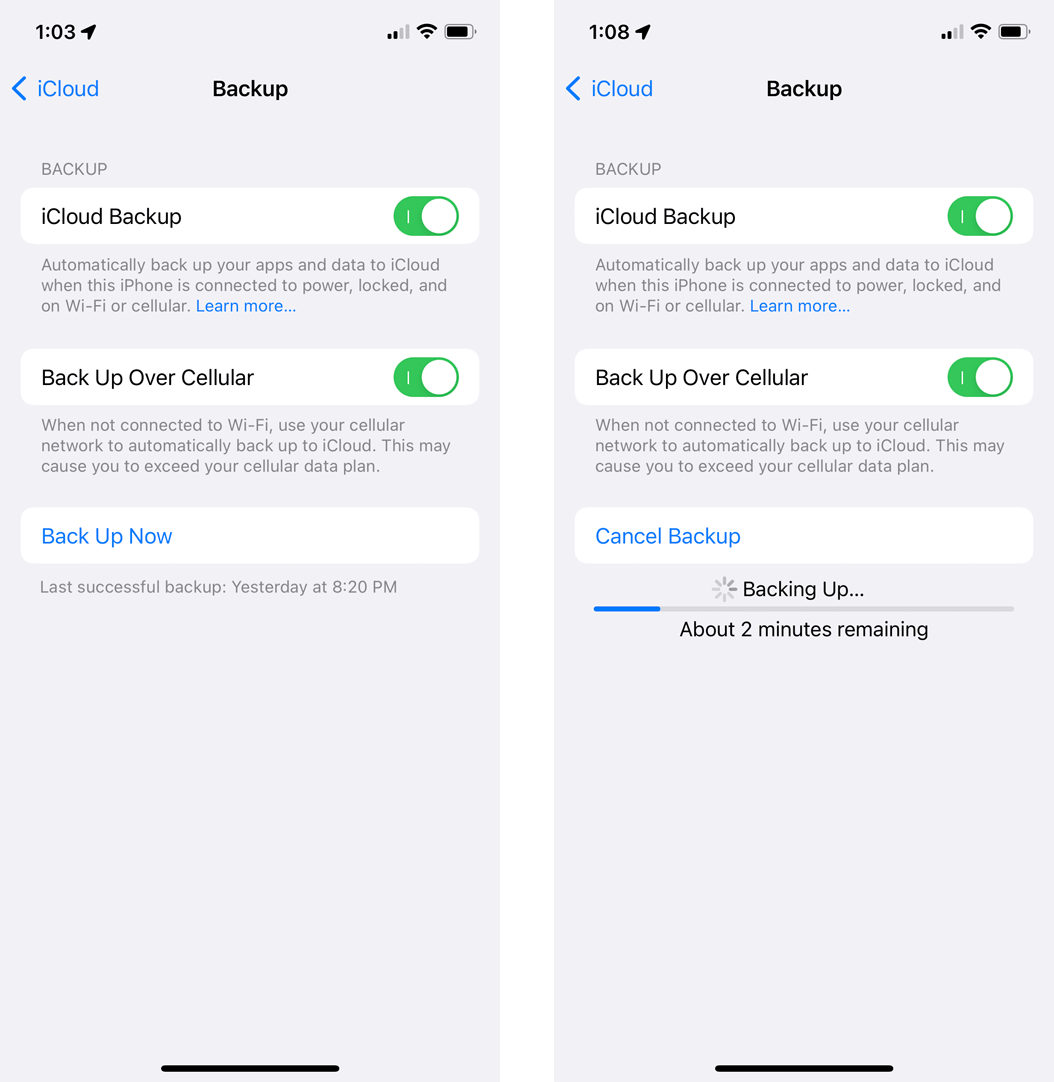
Restore your phone
Now, let’s say your phone isn’t working right and you want to recover it from a backup, or you’ve had to jump ship to a different phone and need to restore all your data and settings. The process will vary depending on how and where you backed up your phone and its current state.
If your iPhone is still accessible, connect it to your computer. Open iTunes in Windows or Finder on a Mac. Click the icon or entry for your phone. Click the button for Restore Backup. You’ll be prompted to turn off Find My if you haven’t already done so. From the popup window, select the most recent backup and click Restore. Enter a password for a local encrypted backup. Your iPhone is then restored from the backup.
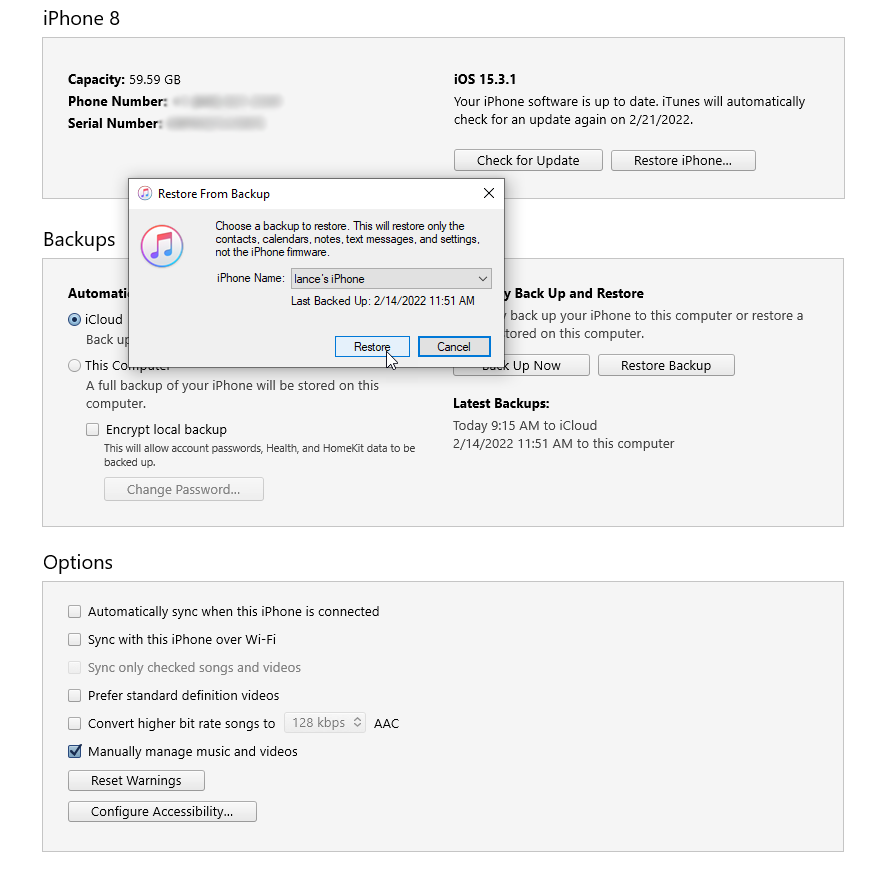
If your iPhone isn’t accessible or you want to restore your backup to a new phone, at some point in the setup process you’ll see a screen named Apps & Data asking how you want to restore your apps and data to the phone. To restore from an online backup, choose the option for Restore from iCloud Backup. Sign into your iCloud account with your Apple ID and password. A verification code is then sent to one of your other devices, such as an iPad or Mac. You’re asked which backup you want to restore. Choose the latest one. Allow the iCloud restore to run.
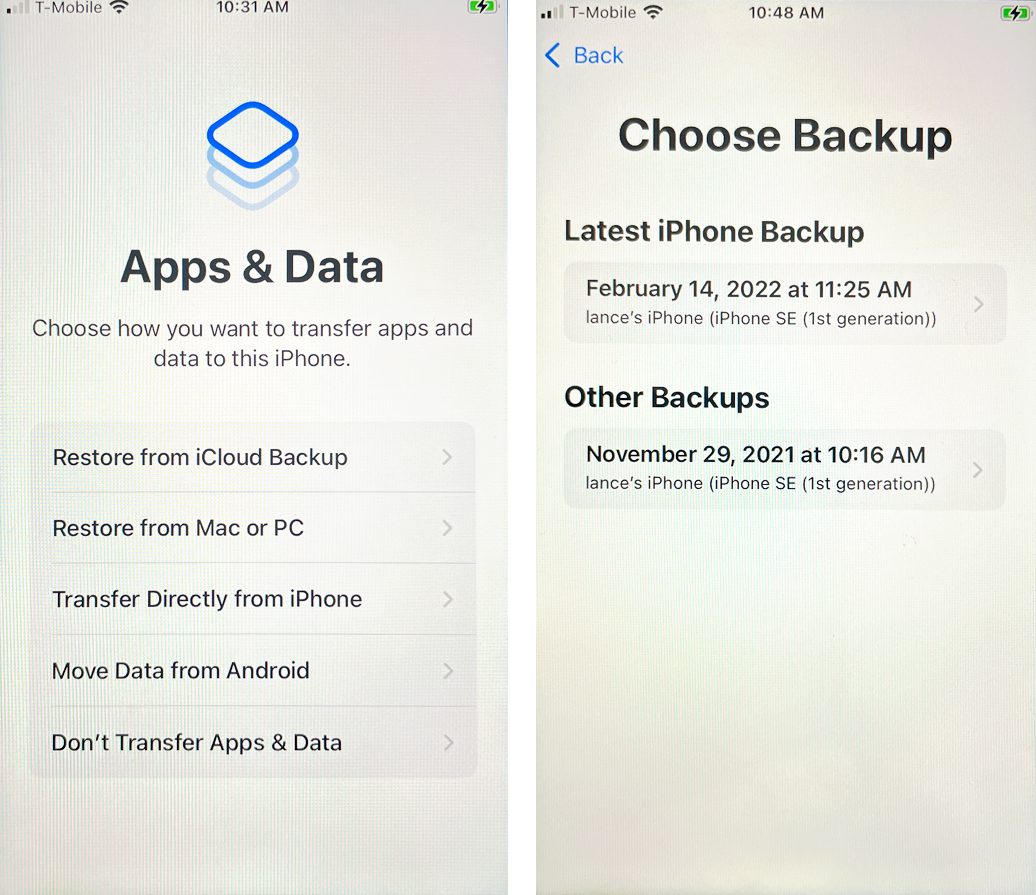
To restore from a local backup instead, make sure your phone is connected to your computer and choose the option for Restore from Mac or PC. In iTunes in Windows or Finder on a Mac, select the option for Restore from this backup and choose the most recent backup. Click Continue. Type the password for an encrypted backup. Wait for your phone to be restored from the backup.
